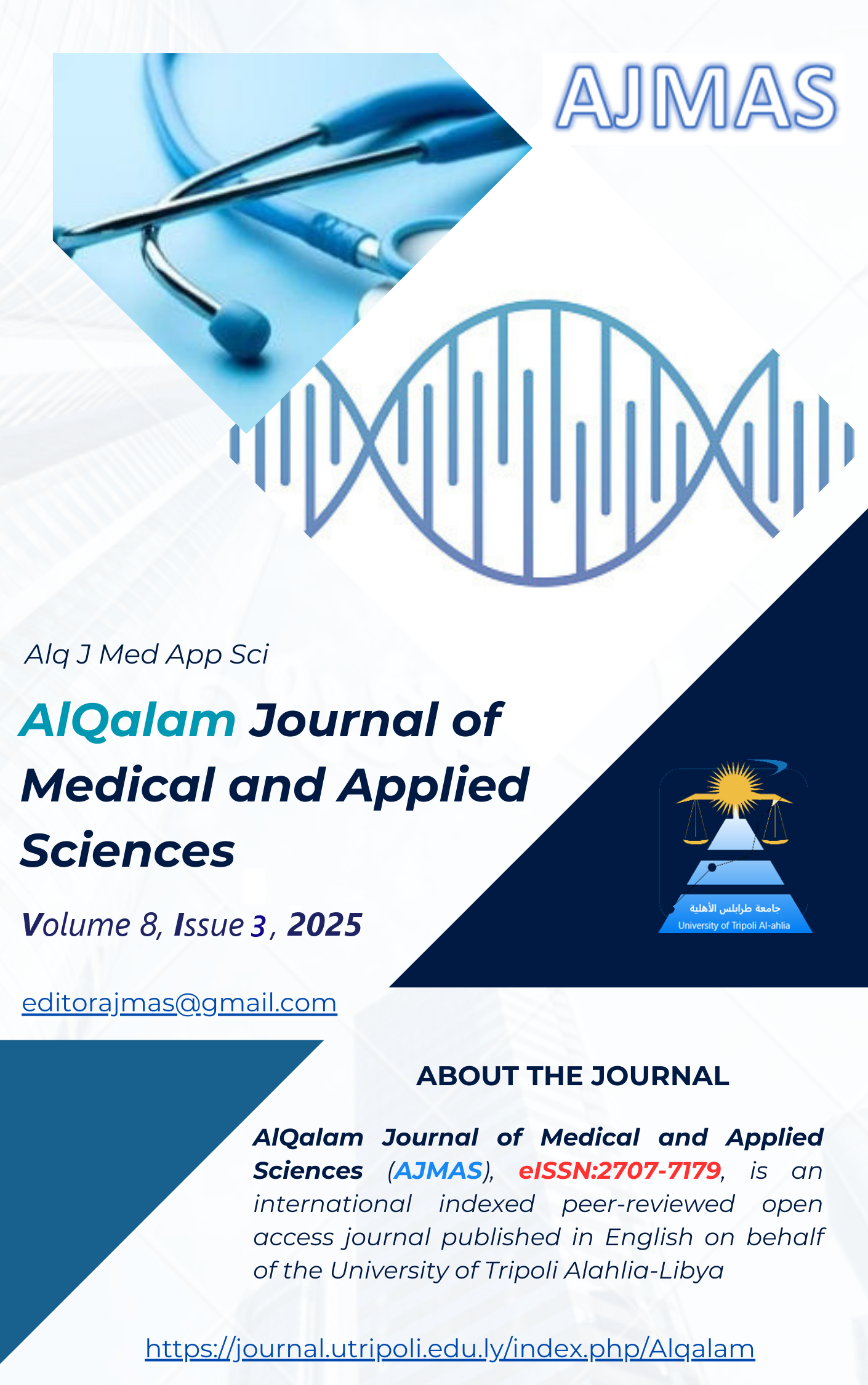Environmental Pollution Assessment of Some Heavy Metals in Surface Sediments of the Eastern Part of the Coast of Tripoli, Libya
DOI:
https://doi.org/10.54361/ajmas.2583114Keywords:
Eastern Coast of Tripoli, Heavy Metals, Pollution Indices.Abstract
In this study, conducted on sediments from the eastern coast of Tripoli, Libya, in 2025, the aim was to monitor heavy metal pollution in the marine environment. Total organic carbon (TOC) and metals (iron, lead, copper, cadmium, zinc, and manganese) were measured in surface sediments from twelve sites along the eastern coast of Tripoli. Sediments (<63 µm) were analyzed using grain size analysis, the Godet TOC method, and atomic absorption spectroscopy (AAS) after acid digestion. Results showed that the sediments were sandy at most sites (89.61–100%), with a very low clay content (<0.35%) and varying silt content (0–10.39%). Sites S4, S6, and S8 were purely sandy, while the silt content was higher at sites S9 and S11. Total organic carbon (TOC) ranged from 0.023 to 0.079%, with the highest values recorded in fine sediments, indicating a direct link between silt and organic matter. Heavy metal analysis results showed spatial variation: iron (207.12–376.41 mg/kg) was highest in Tripoli Port (S1–S3); lead (0.77–4.76 mg/kg) was highest near the port; copper (10.04–48.47 mg/kg) peaked in S1 and S12; cadmium (Cd) rose to 2.35 mg/kg in the port areas, indicating an anthropogenic contribution; zinc (8.95–30.22 mg/kg) and manganese (53.96–117.4 mg/kg) were the opposite. Environmental indicators supported these patterns: the enrichment factor (EF) indicated very high enrichment of cadmium and copper at port sites (S1, S12); the pollution load index (PLI) ranged between 0.25 and 0.83, with the highest level in S1, but all were below 1, indicating the absence of severe pollution; the geological accumulation index (Igeo) showed sediments uncontaminated with iron, lead, zinc, and manganese, while cadmium content ranged from uncontaminated to moderately contaminated. Heavy metal contamination was generally limited, with the exception of localized cadmium and copper concentrations near commercial and fishing ports. The results indicate the impact of human activities on marine sediment quality, with areas near ports and industrial facilities experiencing higher levels of pollution, underscoring the need for continuous monitoring.
Downloads
Published
How to Cite
Issue
Section
License
Copyright (c) 2025 Jumaa Tantoush

This work is licensed under a Creative Commons Attribution 4.0 International License.














